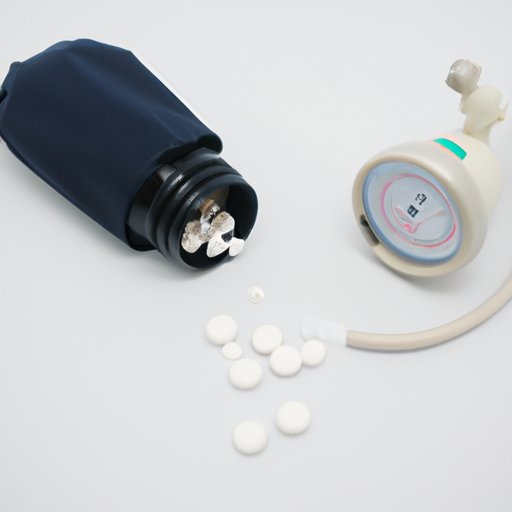
Introduction
Low blood pressure, also known as hypotension, can cause dizziness, fainting, and other uncomfortable symptoms. If you’re struggling with hypotension, you may be wondering how to bring your blood pressure up to a healthy level. This article will explore some of the most effective strategies for increasing blood pressure naturally. Whether you’re a fitness enthusiast or just starting to make healthier choices, this guide is for you.
Dietary Adjustments
Incorporating certain foods and drinks into your diet can help increase your blood pressure. Sodium, caffeine, and nitrates are all known to elevate blood pressure levels. However, it’s important to remember that moderation is key. Too much sodium, for example, can increase the risk of high blood pressure. Some examples of sodium-rich foods include canned soup, pickles, and processed meats. Caffeinated drinks like coffee and tea can also help raise blood pressure, but they should be consumed in moderation. Drinking beet juice, which is high in nitrates, may also help improve blood pressure levels.
Consult with a doctor or nutritionist before making significant dietary changes. They can help create a balanced, nutritious diet that fits your lifestyle and addresses your specific health concerns.
Exercise
Regular exercise can improve cardiovascular function and increase blood pressure. Resistance training, brisk walking, and swimming are all good options for raising blood pressure. However, if you’re not used to exercising, it’s important to start at a manageable level and gradually increase the intensity and duration of your workouts. Consulting with a doctor or trainer can also help ensure that you’re exercising safely and effectively.
Medication
The medications fludrocortisone and midodrine can help increase blood pressure, particularly in people who have low blood pressure due to a medical condition. Fludrocortisone is a steroid that mimics the actions of hormones that regulate blood pressure. Midodrine is a drug that helps constrict blood vessels and increase blood flow. However, these medications can have side effects and pose risks, especially if not taken as directed. It’s important to talk to a doctor about the potential benefits and drawbacks of these medications before starting a new treatment plan.
Hydration
Dehydration can lead to low blood pressure, so staying hydrated is important for maintaining healthy blood pressure levels. Drinking plenty of water throughout the day, especially during hot weather or exercise, can help prevent dehydration. Eating fruits and vegetables with high water content, such as watermelon and cucumbers, can also be beneficial. Conversely, it’s important to limit intake of caffeine and alcohol, which can contribute to dehydration and lower blood pressure.
Lifestyle Changes
Lifestyle habits like smoking and excessive alcohol consumption can lower blood pressure and harm overall health. Quitting smoking and moderating alcohol intake can help raise blood pressure and improve overall wellness. Engaging in regular exercise and stress-reducing techniques, such as meditation and deep breathing, can also be helpful.
It’s important to make lifestyle changes that are sustainable and enjoyable. Small changes, such as taking a walk after dinner or adding a serving of vegetables to your meals, can make a big difference over time.
Conclusion
Increasing blood pressure is achievable with a combination of dietary adjustments, exercise, medication, hydration, and lifestyle changes. Consult with a doctor or nutritionist before making significant changes to your diet, and start exercising at a manageable level to avoid injury. Medications can help, but it’s important to weigh the benefits and risks with a healthcare provider. Staying hydrated and avoiding unhealthy habits like smoking and excessive alcohol use can also help improve blood pressure and overall health.
Remember that everyone’s journey to optimal health is different. Take small, sustainable steps toward your goals, and pat yourself on the back for each positive change you make. With patience, support, and a commitment to self-care, you can achieve healthy blood pressure levels and greater well-being.




